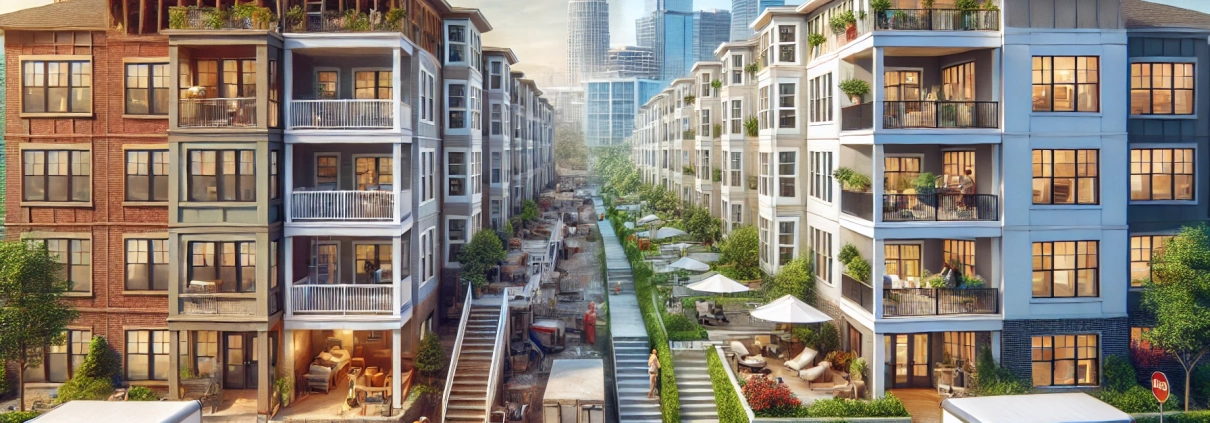Stabilization
Stabilization refers to a point in time when a property reaches its market potential in terms of occupancy, income, and expenses. This is commonly referenced in terms of Stabilized NOI., or the NOI once the property has reached that market potential.
In the case of value-add and opportunistic investments, stabilization occurs at some future point when the value-add or opportunistic strategy has been successfully executed. In the case of a core investment, the in-place NOI is assumed to be stabilized.
Putting “Stabilization” in Context
Crescent Ridge Partners, a real estate private equity firm, recently acquired Magnolia Gardens Apartments, a 200-unit market-rate multifamily property located in Charlotte, North Carolina. The property was built in 1985 and was purchased for $20 million, with the firm identifying a value-add opportunity to enhance its operations and achieve stabilization at a higher NOI.
The Strategy
At the time of acquisition, Magnolia Gardens had a physical occupancy of 85% and an average effective rent of $1,000 per unit. The operating expenses were higher than market norms due to deferred maintenance and inefficient property management practices. Crescent Ridge Partners planned a $3 million capital improvement program to modernize the units, upgrade common areas, and improve energy efficiency.
The firm’s pro forma projected that these renovations would allow the property to command an average rent of $1,250 per unit, increase occupancy to 95%, and lower annual operating expenses by 10%.
The Execution and Stabilization
Crescent Ridge implemented its value-add plan over a 24-month period, renovating 20 units per month. As renovations were completed, updated units were leased at the higher rents, gradually increasing both the property’s occupancy and rental income. Stabilization was projected to occur in Year 3, when the property reached 95% occupancy and the newly stabilized NOI aligned with market expectations.
To illustrate, the stabilization metrics were calculated as follows:
- Stabilized Potential Gross Income (PGI):
200 units × $1,250/month × 12 months = $3,000,000 annually - Vacancy and Collection Loss (5%):
$3,000,000 × 5% = $150,000 - Stabilized Effective Gross Income (EGI):
$3,000,000 – $150,000 = $2,850,000 - Operating Expenses (reduced by 10%):
$1,200,000 (original expenses) × 90% = $1,080,000 - Stabilized NOI:
$2,850,000 – $1,080,000 = $1,770,000
The stabilized NOI of $1,770,000 reflects the property’s improved operational and income profile after the successful execution of the value-add strategy.
Key Takeaway
In this hypothetical scenario, stabilization is achieved when Magnolia Gardens reaches its market potential in occupancy, income, and expenses. This is a critical milestone in the investment lifecycle, as it signifies that the property is now performing at the level projected during acquisition underwriting, and it can either be retained for cash flow or sold to realize the investment’s value creation.
Frequently Asked Questions about Stabilization in Real Estate Investments
What does stabilization mean in commercial real estate?
Stabilization refers to the point when a property achieves its market potential in occupancy, income, and expenses. It is typically referenced in terms of stabilized Net Operating Income (NOI).
When does stabilization occur in a value-add investment?
In a value-add investment, stabilization occurs after renovations and operational improvements are completed and the property reaches target occupancy, rent levels, and expense ratios. In the Magnolia Gardens example, this occurred in Year 3, after increasing occupancy to 95% and achieving higher rent and lower expenses.
How is stabilized NOI calculated?
Stabilized NOI is calculated as:
Stabilized Effective Gross Income (EGI) – Operating Expenses.
In the case of Magnolia Gardens:
PGI = $3,000,000
Vacancy = $150,000
EGI = $2,850,000
Expenses = $1,080,000
Stabilized NOI = $1,770,000
What is the difference between in-place NOI and stabilized NOI?
In-place NOI refers to the property’s current net income, while stabilized NOI reflects the projected net income once the property reaches full operational potential. In core investments, the in-place NOI is typically already stabilized.
Why is reaching stabilization important to investors?
Stabilization is a key milestone that signifies the success of an investment strategy. It often marks the point at which the investor can:
Refinance the property
Hold for stabilized cash flow
Sell the asset to realize value creation
How do capital improvements impact stabilization?
Capital improvements support stabilization by raising rents, boosting occupancy, and reducing operating inefficiencies. In the Magnolia Gardens example, a $3 million renovation program enabled higher average rents and lower expenses, leading to a stabilized NOI.
Click here to get this CRE Glossary in an eBook (PDF) format.

